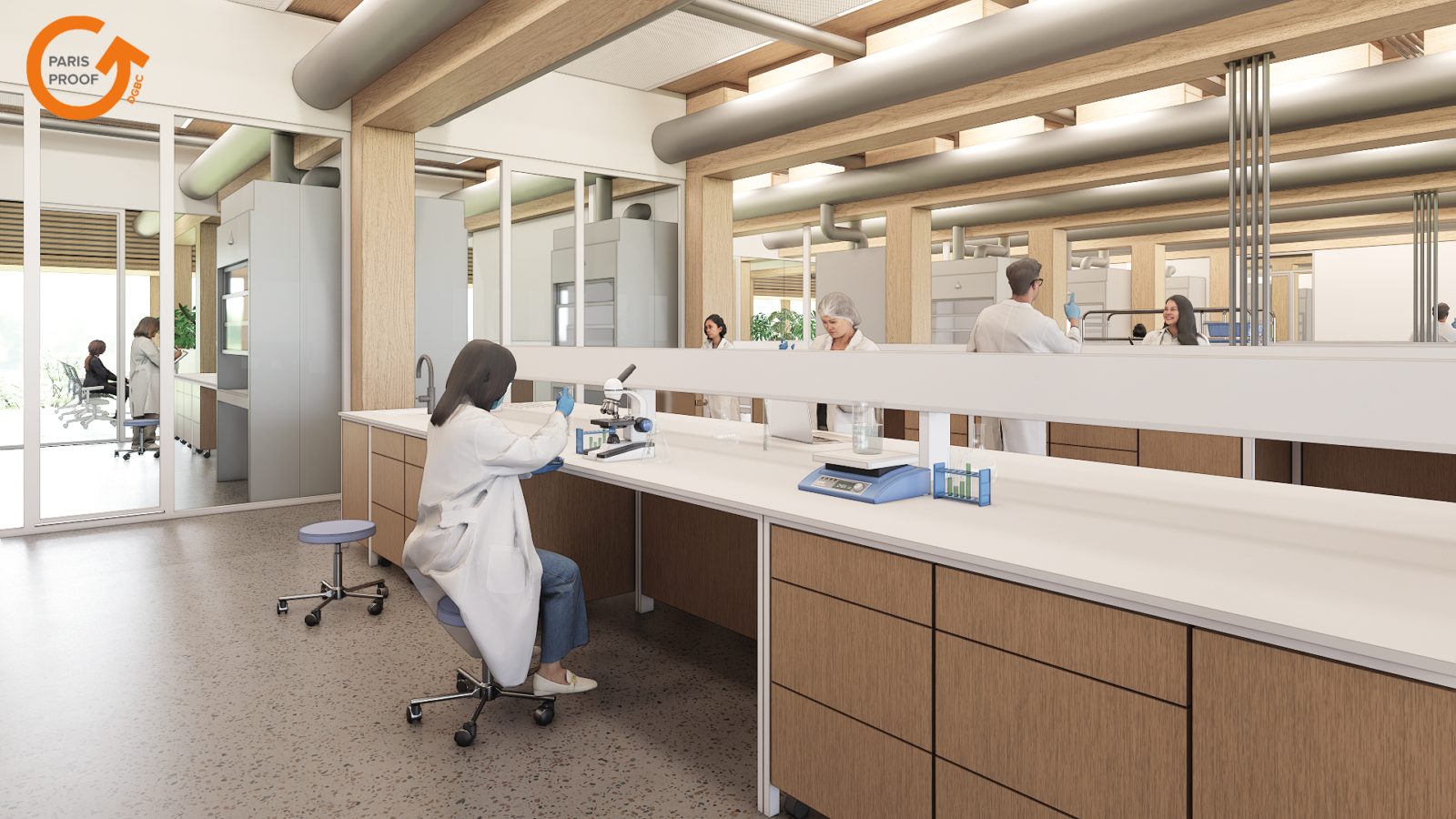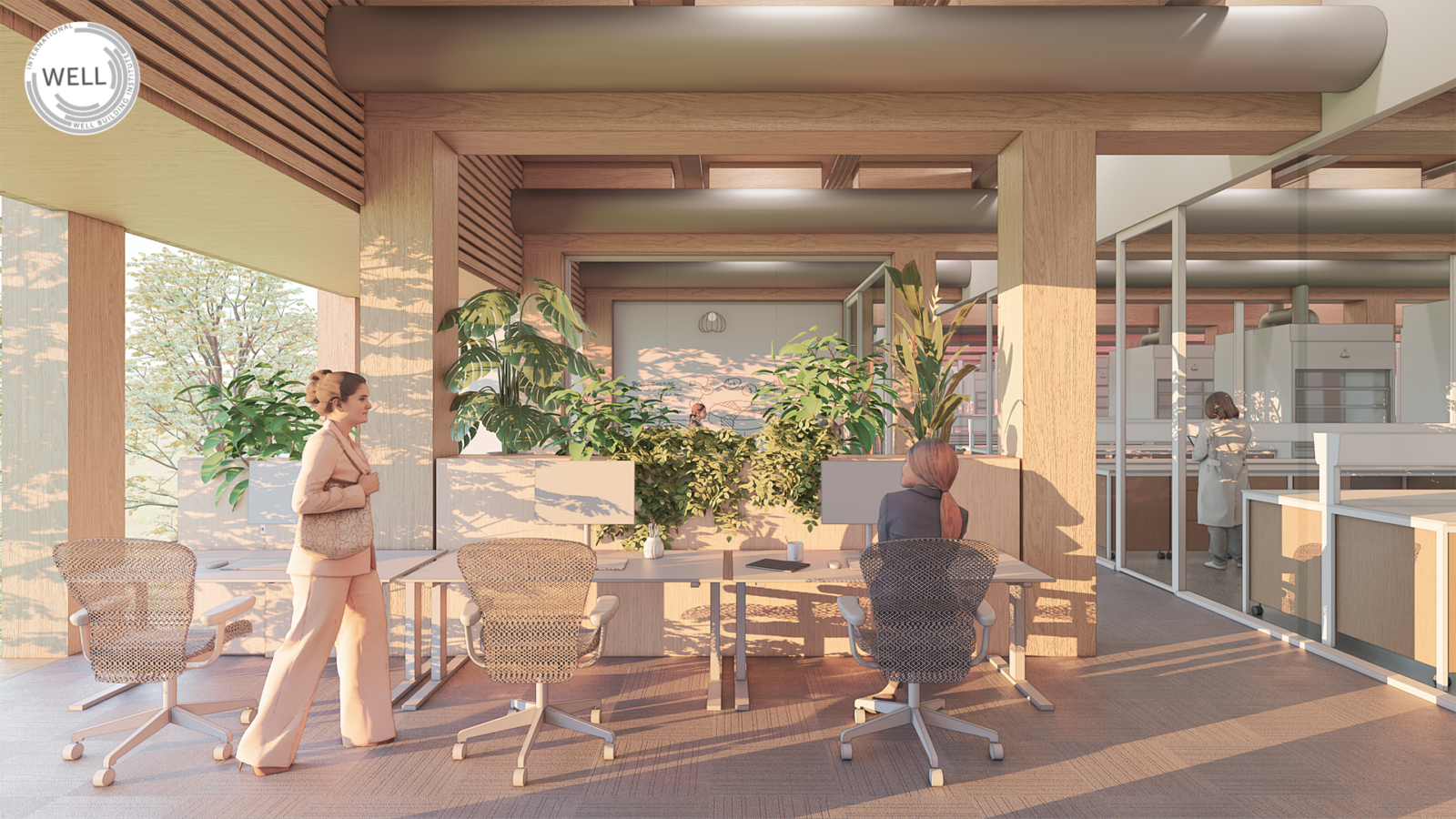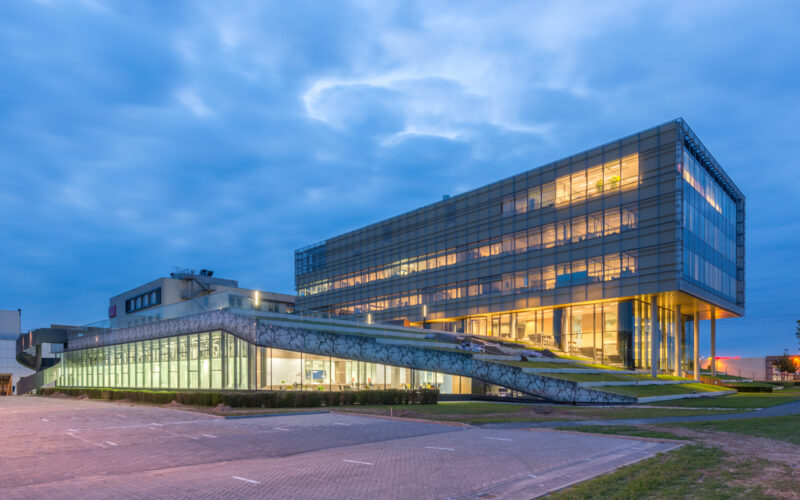
The Wooden Lab: the future of sustainable and efficient laboratories
The Wooden Lab: the future of sustainable and efficient laboratories
What is The Wood Lab?
The Wooden Lab is an innovative approach to a laboratory building, focusing on wood as a building material. It offers a future-proof solution that reduces CO₂ emissions, promotes employee health and reduces construction time. This concept is suitable for 80% of laboratories in the Netherlands and enables a Paris Proof laboratory.
The need for The Wooden Lab
In the search for more sustainable building solutions, the R&D sector is faced with the challenge of reducing the environmental impact of laboratory buildings without compromising on the stringent requirements for these specific environments. The Wooden Lab makes it possible to build laboratories with wood while meeting stringent requirements for load-bearing capacity, vibration sensitivity and safety. This contributes not only to meeting climate goals, but also to the health and well-being of the people who work there. The design of The Wooden Lab combines functionality with aesthetics, creating a workplace that is both sustainable and inspiring.
Space for collaboration and connection
Space for meeting and collaboration plays an important role in the design of The Wood Lab. How do we do this? We create a comfortable and healthy working environment, modular and clearly laid out with clear zoning for the lab layout, routing and writing spaces. From any position you have a view of all activities in the labs and a view outside. This contributes to safety in the labs. If desired, the lab environment can be combined with an office environment. In the cores, in addition to the necessary facilities such as elevator, stairs and toilets, we create a generous pantry environment as a central meeting place.
Sustainable and circular building
Sustainability and circularity are central to The Wood Lab. Using wood as a construction material reduces CO₂ emissions by 50% compared to traditional construction methods, such as concrete and steel. This results in a significant contribution to the environmental impact of the built environment. The use of wood not only helps reduce CO₂ emissions during construction, but also sequesters CO₂ in the built environment, further reducing the carbon footprint. The design uses modular and prefabricated elements, which can be quickly assembled, as well as easily disassembled and reused.

The benefits of biobased building
With the Wood Lab, we are taking an important step toward a sustainable future for laboratories. Building with wood offers several advantages:
- CO₂ reduction: if R&D companies switched to wood instead of concrete and steel in new construction, it would save 57,600,000 kg of CO₂ annually. This is equivalent to taking about 27,500 cars off the road each year
- Healthy working environments: the use of natural materials such as wood contributes to a natural working environment, which reduces stress and increases employee well-being and productivity.
- Efficiency and speed: the prefabricated elements allow The Wooden Lab to be built faster than traditional labs, resulting in lower costs and shorter construction times.
- Circular design: the design allows the wooden elements to be reused, contributing to a circular economy and reducing the need for fossil resources and materials.
The Wood Lab offers an innovative, sustainable solution that fits perfectly into the future of the construction and R&D sector. It is the ideal choice for companies that want to contribute to a circular and healthy future, respecting both nature and employees.
We are happy to tell you more.

- ir. Renze Evenhuis
- Architect director
- Neem contact op

